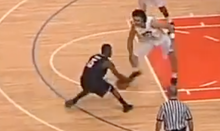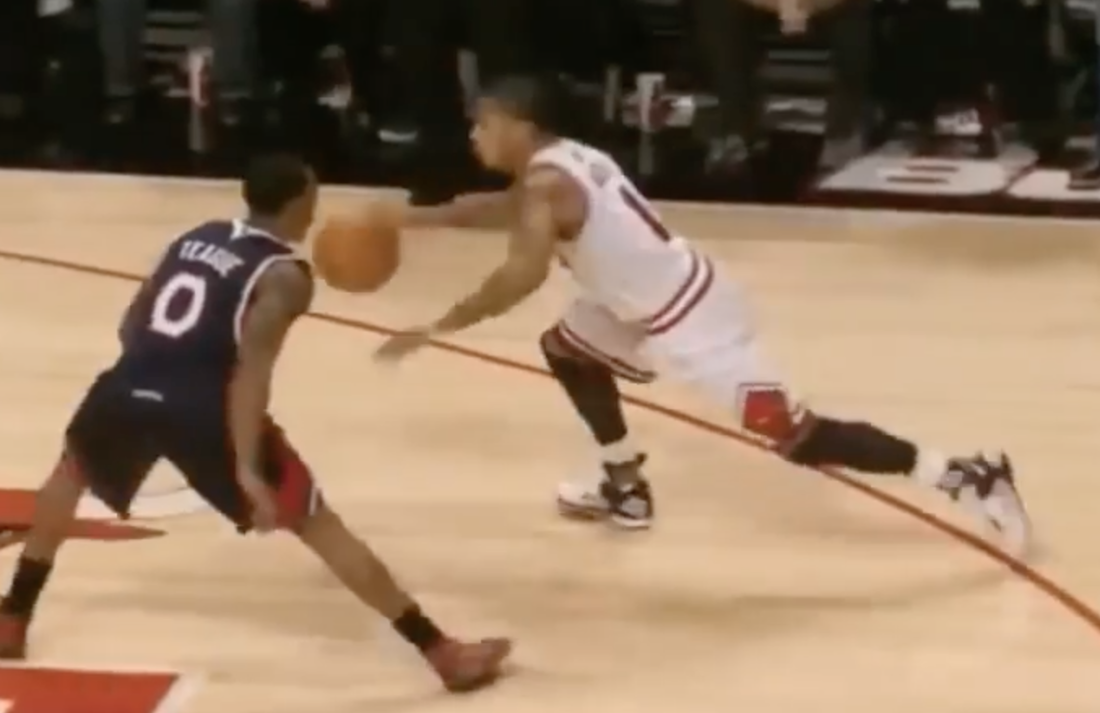|
Especially when playing on the perimeter, an explosive first step allows for countless opportunities to destroy your defender one-on-one. And, although many athletes are inherently explosive from a stand-still, a quick first step can be developed through proper technique and training. The Science Behind It The primary technical aspect of the first step is, rather obviously, explosiveness from a stand-still... or not. Before I go further in my explanation, imagine this: you are holding a rubber band against a table, and you are attempting to hit the table with the highest force possible. If you hold one side on the table, and simply drop the other, will the rubber band ever develop much speed or force? No. If, however, you quickly stretch the rubber band higher up a couple inches, it will shoot down at a rapid pace. This is the essence of the Stretch Shortening Cycle (SSC) of the human body. As I discussed briefly in the defensive post from last week, there are two stages of muscular contraction during movement: eccentric (the lengthening) and concentric (the shortening; generally the explosion of a jump, stride, or first step). The rapid change from eccentric to concentric creates a strong elastic force in the muscle which, again, is known as the Stretch Shortening Cycle. This is precisely why a countermovement jump, where one drops their hips and then explodes up, will always develop more force than a non-countermovement jump, where the athlete does not utilize the eccentric contraction. So, how does this relate to a first step? It's simple: if you can learn how to utilize the SSC on every first step, you will immediately add to your explosiveness from a "stand-still." How to Stimulate the SSC If you were teaching a younger basketball player how to quickly explode past their defender, you would never instruct them to first take a step back, would you? It's literally a step in the wrong direction; it will make you slower and give the defense more time to react. False. The only way to activate the SSC, which biomechanically provides more force and thus a higher rate of acceleration, is to first load with an eccentric contraction, which can be created by taking either a "negative step," "scissor step," or skip, which can be lateral or linear and many times can also be used with a cross, as seen with Russell Westbrook below. *Note: also, on the catch, a split step assists you in collecting and maintaining balance, as shown at 0:50.*
Additionally, the negative step has been proven to produce more force. According to a study performed by PJF Performance and the CSUF Biomechanics Lab, when taking a negative step, the test study created 2074.67 Newtons of force, over 1.3 times more force than when not taking a negative step (1566.07 N). Lower Position = More Efficient First Step Apart from the Stretch Shortening Cycle, there remain a few key technical points that athletes must perfect to maximize their explosiveness. And these all stem directly from the command, almost cliche, that most basketball players have heard redundantly their entire life: "be low." How many athletes actually knew why they needed to remain low when attacking or exploding? In all likelihood, very few. But when you investigate it more thoroughly, one finds that there are two main benefits in attacking from a low position. Firstly, when an offensive player is low, their strides automatically become longer and more controlled, without over-striding. When a player's shin-knee angle surpasses 90º, it becomes a deceleration position. And, taking a long first step will generally cause a player to do this... That is,
Source: PJF Performance Instagram (@PJFPerformance) NBA Broadband Account via the Free Use Policy
5 Comments
Shahrukh
9/20/2016 09:59:13 pm
These articles are great. Are you going to make more of them? Thanks
Reply
Larry Thibodeaux
10/14/2016 09:07:49 pm
The blog post is very helpful
Reply
Penis
9/4/2023 02:29:34 am
First in 3 years
Reply
Leave a Reply. |
Coleman AyersFounder/Owner of By Any Means Basketball Categories
All
Archives
September 2020
|
|
By Any Means Basketball is a Miami, Florida-based basketball and athletic performance training organization, centered around using science-based training methods to optimize performance and shift the global basketball culture.
Email: [email protected] Twitter: @byanymeansbball Instagram: @byanymeansbasketball YouTube: By Any Means Basketball Privacy Policy |



 RSS Feed
RSS Feed
